
Essential Value of Computer Vision in a Digital World
In today's digital era, where information is abundant and technology advances at an unprecedented pace, computer vision has emerged as a transformative force that revolutionizes the way we interact with the world around us. With the ability to analyze and understand visual data, computer vision opens up possibilities across numerous industries and applications.
In this blog, we’ll explore the essential value of computer vision in the digital world. Also examine the fundamental concepts and applications that impact businesses, society, and our everyday lives.
Basic Understanding of Computer Vision
Computer vision is a subfield of Artificial Intelligence that enables machines to perceive and interpret visual information just like humans. Advanced algorithms and deep learning models can now make sense of images, videos, and even live streams.
Also Read: Deep Learning: Basic Concepts And Applications For Beginners
This involves cameras and digital images to capture visual data and then applying complex algorithms to analyze and extract meaningful information from it. Here's a breakdown of what computer vision is:
Extract Information: Computer vision algorithms can identify objects, people, and even activities within images and videos.
Understand The Visual World: By analyzing the data, these algorithms can begin to understand the context of the visual information. Imagine a self-driving car using computer vision to see objects like cars and pedestrians and understand how far away they are and how they are moving.
Take Action: In some cases, computer vision can be used to prompt a response. For example, a security system might use facial recognition to identify authorized personnel.
Computer vision is a constantly evolving technology that has the potential to transform many aspects of our lives, from the way we interact with machines to how we understand the world around us.
How Computer Vision Works
The process of human vision involves analyzing visual data by seeing through the eyes. The eyes capture the visual input, which is then transmitted to the brain to be processed and interpreted. Based on this interpretation, the brain produces a result, as shown in images.
In contrast, Computer Vision relies on sensing devices to capture input. The input is then processed and analyzed to determine what the item is and produce an output. This involves interpreting the input data and recognizing patterns, features, and shapes to identify the object or scene being viewed. The output generated by Computer Vision can include information such as the object's location, size, shape, and orientation, as well as any other relevant attributes.
Computer vision in AI involves the development and deployment of algorithms and systems that enable computers to gain high-level understanding from digital images or videos. Here's an overview of how computer vision works:
1. Image Acquisition
The process begins with capturing images or videos using cameras or sensors. These images are then digitized and fed into a computer system.
2. Preprocessing
Before analysis, images may undergo preprocessing steps such as resizing, normalization, noise reduction, and color correction to enhance their quality and make them suitable for analysis.
3. Feature Extraction
In this step, meaningful features are extracted from the images. Traditionally, this involved handcrafted features like edges, corners, or texture patterns. However, with the advent of deep learning, feature extraction is often performed automatically by neural networks, which learn hierarchical representations of the input data.
4. Feature Representation
Extracted features are then represented in a format suitable for analysis. This could involve transforming the features into vectors or other mathematical representations that can be processed by machine learning algorithms.
5. Training
Machine learning algorithms, including classic techniques like Support Vector Machines (SVMs) or modern deep learning architectures like Convolutional Neural Networks (CNNs), are trained using labeled data. During training, the algorithm learns to associate input features with corresponding labels or classes.
6. Inference
Once trained, the model can be deployed for inference on new, unseen data. The model processes the input images and produces predictions or classifications based on the learned associations.
7. Post-processing and Interpretation
The output of the model may undergo post-processing steps such as thresholding, filtering, or clustering to refine the results. Additionally, interpretation techniques may be employed to understand and visualize the model's decisions, providing insights into its reasoning.
Computer Vision Applications in Various Industries
Significant contributions to various industries of computer vision bring about revolutionary changes in business operations and transform numerous processes. Let's delve into several key domains where computer vision has demonstrated its indispensable worth:
1. Computer Vision Enhances Human-Machine Interaction
With the ability to enhance human-machine interaction, Computer Vision can understand and respond to human gestures, facial expressions, and body language. This capability has paved the way for advancements in fields such as robotics, virtual reality, and augmented reality. Imagine a future where machines can interpret human emotions and provide tailored responses to enhance user experience.
2. Computer Vision In Healthcare
Computer vision has also made significant contributions to the healthcare industry. It enables innovative medical X-ray techniques in diagnosis and diseases. For example, computer vision algorithms can analyze medical scans to detect abnormalities, assist in surgical procedures, and even predict patient outcomes. With the help of computer vision, healthcare professionals can make more accurate and informed decisions that lead to improved patient care.
3. Transform Transportation and Logistics Industry
Computer Vision played a crucial role in the development of autonomous vehicles and make self-driving cars a reality. Computer vision algorithms analyze real-time data from cameras and sensors to identify objects, detect obstacles, and make decisions on navigation. It improves safety, reduces traffic congestion, and enhances overall efficiency which revolutionizes the transportation system.
4. Advancements in Security and Surveillance
Significantly advanced in the field of security and surveillance. It enables the automated analysis of video feeds to allow for real-time threat detection, facial recognition, and object tracking. With computer vision systems in place, it becomes easier to identify potential security risks, monitor public spaces, and ensure the safety of individuals. Law enforcement agencies and security organizations can respond more effectively to incidents and prevent potential threats with Computer Vision.
5. Empower the Retail and E-commerce Sector
In the retail and e-commerce industry, computer vision has opened up new possibilities for personalized shopping experiences, enhanced customer engagement, and analyze customer behavior and preferences. The algorithms can recommend products that provide virtual try-on experiences and enable cashless checkout. This technology transforms the way of shopping, making it more convenient, and efficient that tailored to individual needs.
6. Revolutionize Manufacturing and Quality Control
It enables automation and improves quality control processes. Manufacturers can inspect defective products, ensure compliance with quality standards, and identify production errors in real-time using computer vision systems. Increase productivity and reduce costs. Manufacturing companies can achieve higher levels of efficiency and precision by integrating with computer vision.
Read More: How Natural Language Processing Boost Your Business Efficiency and Growth
Future Trends in Computer Vision
The field of computer vision is constantly evolving, with new advancements happening all the time. Here are some of the exciting trends expected to shape the future of computer vision in 2024 and beyond:
Generative AI
Generative AI also known as Gen AI, generates realistic data for training other computer vision models, creating special effects in movies, or even designing new products.
Multimodal AI
This combines computer vision with other forms of AI, such as natural language processing (NLP). This will allow machines to understand the world more holistically, leading to more powerful and versatile applications. For instance, a system combining computer vision and NLP could analyze a scene and provide a detailed description of what's happening.
Focus on Healthcare
Computer vision is already being used in healthcare for tasks like diagnosing diseases and analyzing medical images. In the future, we can expect even more sophisticated applications, such as robotic surgery aided by computer vision or AI-powered systems that can monitor patients for signs of illness.
Edge Computing and Lightweight Architectures
Traditionally, computer vision relied on sending data to the cloud for processing. Traditionally, computer vision relied on sending data to the cloud for processing. With edge computing data processes on devices at the edge of the network and enables faster and more efficient applications. This is crucial for real-time tasks like autonomous vehicles or security systems.
Enhanced Reality
Computer vision is essential for augmented reality (AR), which overlays digital information in the real world. Advancements in computer vision will lead to more immersive and interactive AR experiences. Imagine museums where exhibits come alive with computer-generated information, or surgeons using AR overlays during operations.
Also Read: GenAI: The Next Generation of AI Technology
Explore More: Multi-Modal AI System: Everything You Need To Know About
Explore More: AI in Healthcare
These are just a few of the exciting trends that are shaping the future of computer vision. As computer vision continues to develop, we can expect to see even more innovative applications that will change the way we live and work.
Examples of Computer Vision In Real Life
Here are some examples of the most integral part of our daily lives computer vision in real-life:
- Self-Driving cars
It enables self-driving cars to perceive their surroundings using cameras and sensors. The technology helps identify objects, pedestrians, traffic signs, and lane markings and allows vehicles to navigate safely and make autonomous decisions.
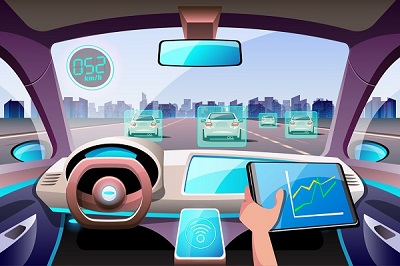
- Medical Diagnostics
With Computer Vision technology medical diagnostics can analyze medical images such as X-rays, CT scans, and MRIs. It helps detect diseases, identify anomalies, and aid in the early detection of conditions like cancer.
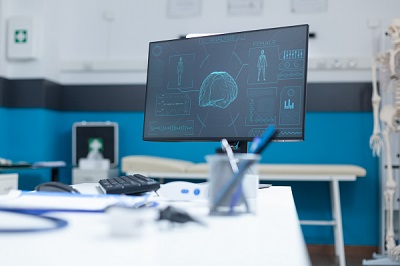
- Agriculture and Farming
Computer vision is employed in agriculture to monitor crop health, detect diseases, and optimize irrigation and fertilization. It helps farmers make informed decisions and increase crop yields.
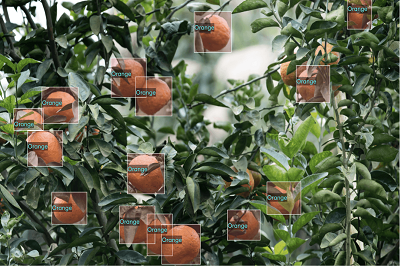
- Retail Automation
Cashless Stores utilizes Computer vision where cameras track the movements of customers and charge them for the items they pick. Computer vision combines with AI algorithms and streamlines the shopping experience.
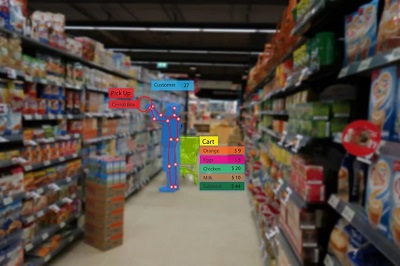
- Quality Inspection In Manufacturing
Manufacturing industries use computer vision to inspect products, detect product defects, measure dimensions, and ensure the quality of products. Reduce human errors and increase efficiency.
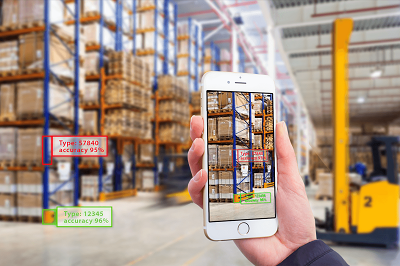
- Robotics
Robots equipped with vision systems can perceive and interact with their environment which allows them to perform tasks like object recognition, grasping, and navigation.
- Sports Analytics
In sports, it helps to capture and analyze footage, providing valuable insights to coaches and players. It helps track player movements, measure performance metrics, and enhance training strategies.
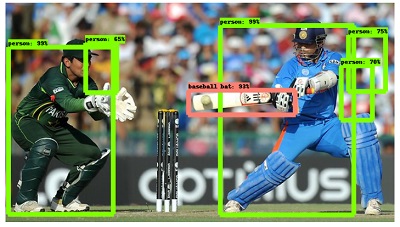
These examples demonstrate the versatility and impact of computer vision in various fields and showcase its ability to revolutionize industries and improve our daily lives.
Conclusion
Computer vision holds immense value in our digital world. Its ability to interpret visual data and mimic human vision has paved the way for transformative advancements across various industries. From healthcare to transportation, security to retail, computer vision drives innovation and improves the way we live and work. As technology continues to evolve, computer vision will play a vital role in shaping our future.
If you have any Computer Vision project ideas, share your requirements with CodeTrade India, a leading AI software development company based in India. Our AI experts help you to create custom computer vision software that meets your requirements.
Leverage the Advantages of Future Technologies…!